Reasons to visit Sado Island, Japan
This website uses affiliate links which may earn a commission at no additional cost to you. As an Amazon Associate I earn from qualifying purchases.
Updated: 13th April 2020
Japan is a nation of clashes and contradictions, from the modern, or in-fact, futuristic cities, to the traditional elements that blend so naturally amongst the skyscrapers and robot restaurants. But if you want to soak up the atmosphere of Japan from years gone by, Sado Island provides the perfect opportunity.
To reach Sado Island from Tokyo, you’ll need to board a Shinkansen train to Niigata Prefecture, around a two-hour journey before boarding a jet-foil, or a slower ferry over to the island.
A rugged land of rock, rice terraces, and rich history, Sado is a unique island and the perfect complement to a more modern city-break in Tokyo, and here are some of the main reasons to visit Sado Island.
1. Taiko Drumming
The Taiko Experience Exchange Center usually closes in the winter months, but luckily as it was their last days of packing everything away, they had agreed to squeeze me in for a little lesson.
Taiko itself means a percussion instrument, but Sado Island is famed for its players, the Kodo Group, who tour the world showing off their skills and I was lucky to have one of these stars teaching me the ropes during a one-hour lesson. The huge wooden hall had drums of all size in them, including two giant ones that my instructor had helped hand carve from a single hollowed-out tree herself.
Patiently, I learnt how to play three different types of drum, and the session ended in a full-on jam as we battled it out together, seeing who would fail at “follow the leader’ first. If there is one memory I’ll cherish from Sado the most, it was that hour, the patience and talent of my instructor, and the incredible friendliness of everyone at the centre.
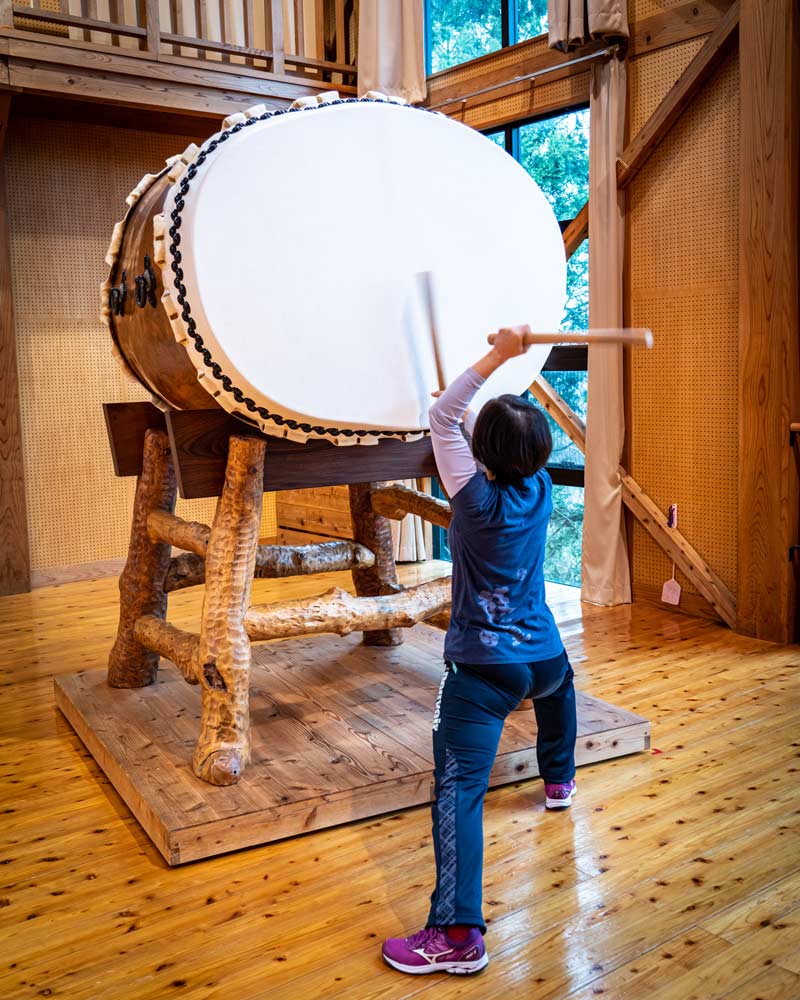
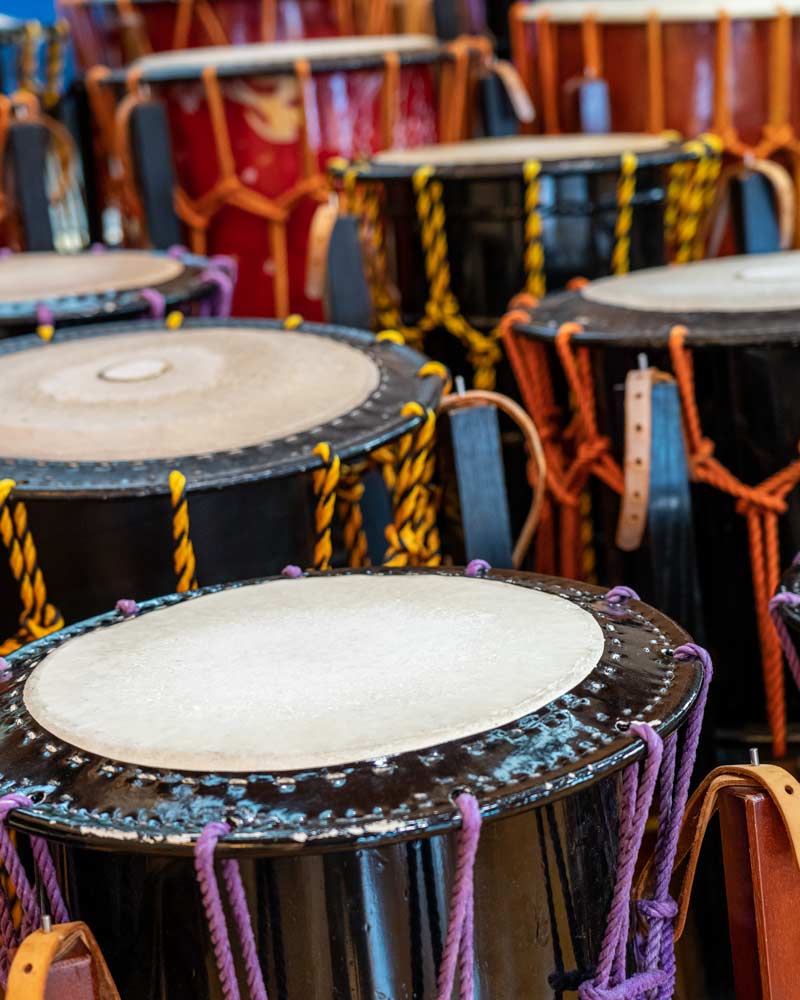
2. Senkakuwan Bay and the dramatic coastline and caves
Before visiting Sado Island, I was told it was like a mini Hawaii, and the beautiful rugged coastline and lush green vegetation certainly provides some similarities.
The coastline of Sado Island is pretty special, with many caves and rocky outposts to explore. In parts formed by volcanic activity, you’ll find a mix of cliff-faces, and flatter areas, with compressed rocks rising out of the ocean in all shapes and sizes. Along the Ogi Coast is designated as a National Monument for this reason.
One of the most beautiful parts of the coast is Senkakuwan Bay, which is almost fjord-like. Rocks rise out from the ocean, boats take tours to the caves, and a white bridge links some of the outposts together. There is a visitor centre where there is a bar and not very nice aquarium by the bridge which you’ll pay an entry fee to get into, but honestly, the views looking across the bay are much more splendid and free.
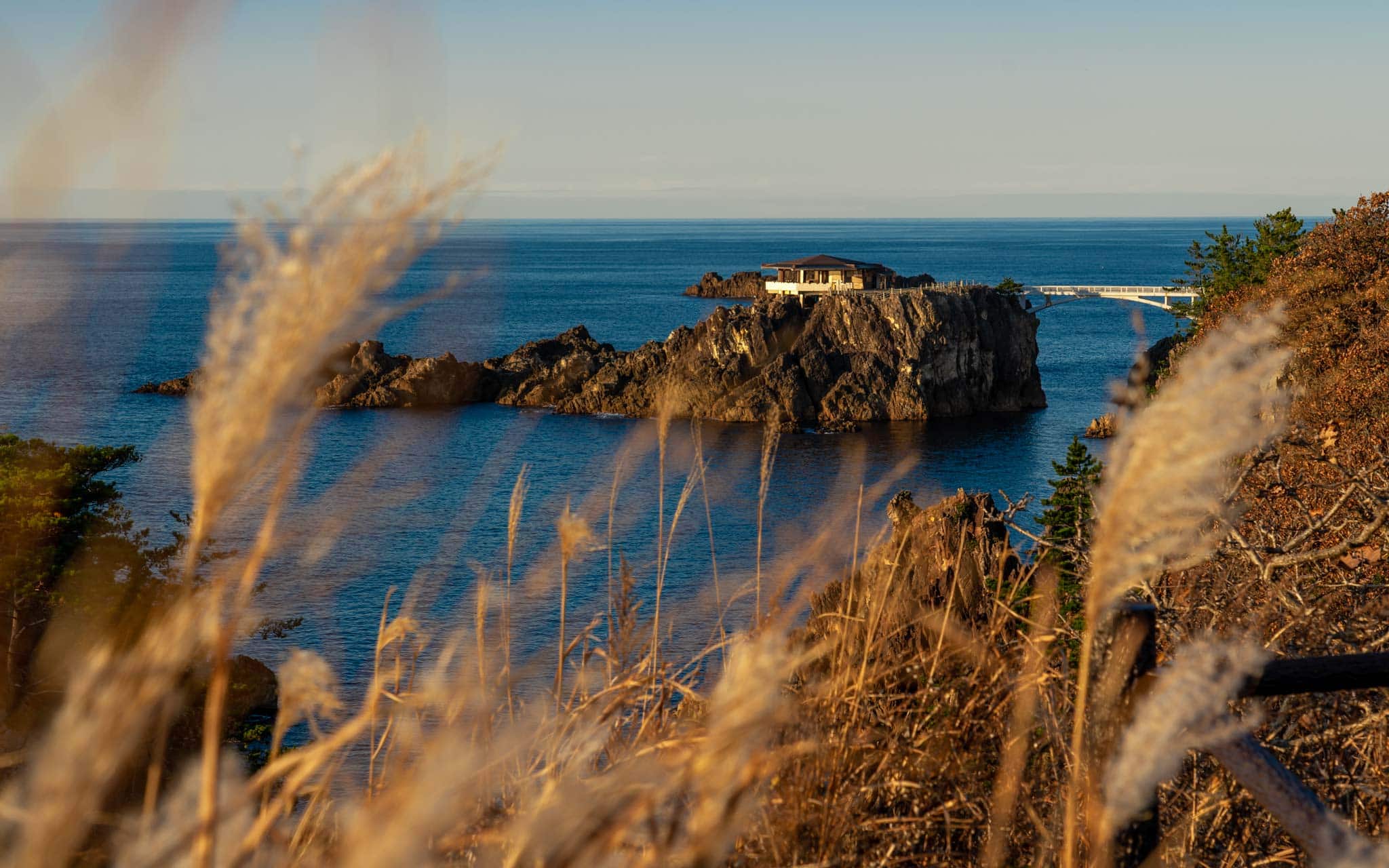
3. Take a Tub Boat trip
The Tub Boats (known as Tarai) date back to the 19th Century, during the Meiji period when these round shaped boats became popular because of their stability and easier to control due to their shape.
Nowadays, they are one of the most popular tourist attractions in the Niigata Prefecture, and you can enjoy rides in them for a couple of people.
The tub boat rides, complete with traditional outfits, can be experienced year-round in Ogi Port, but for a more scenic setting, in the summer months head to Ya Island, just a little further around the coast.
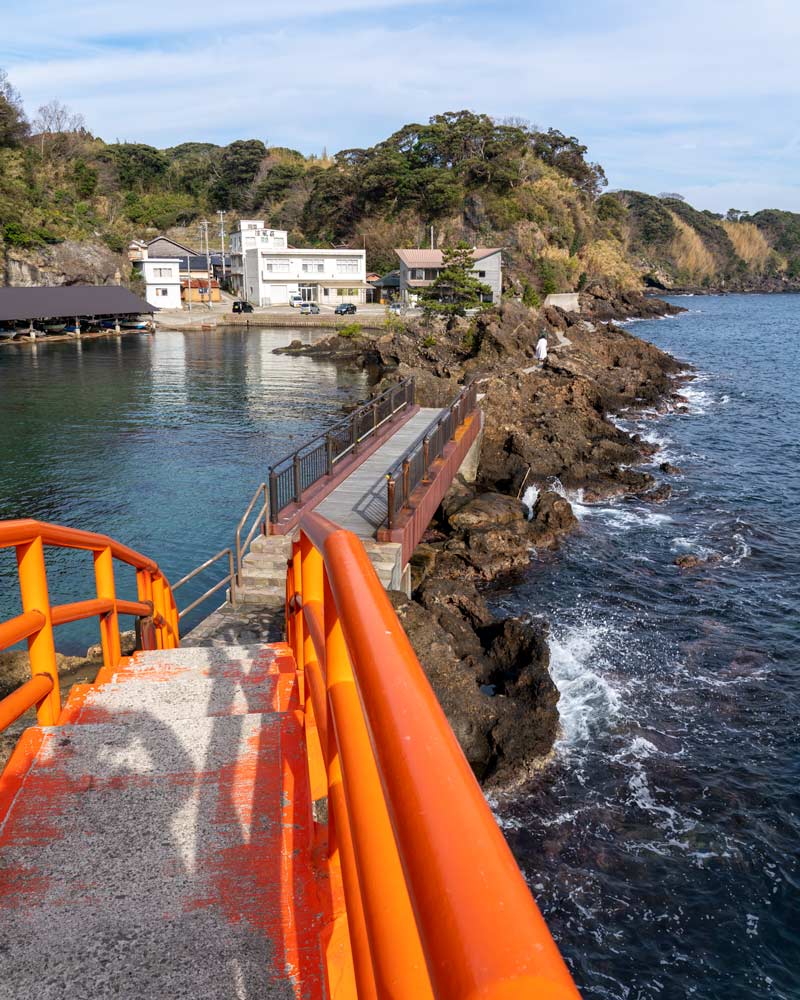
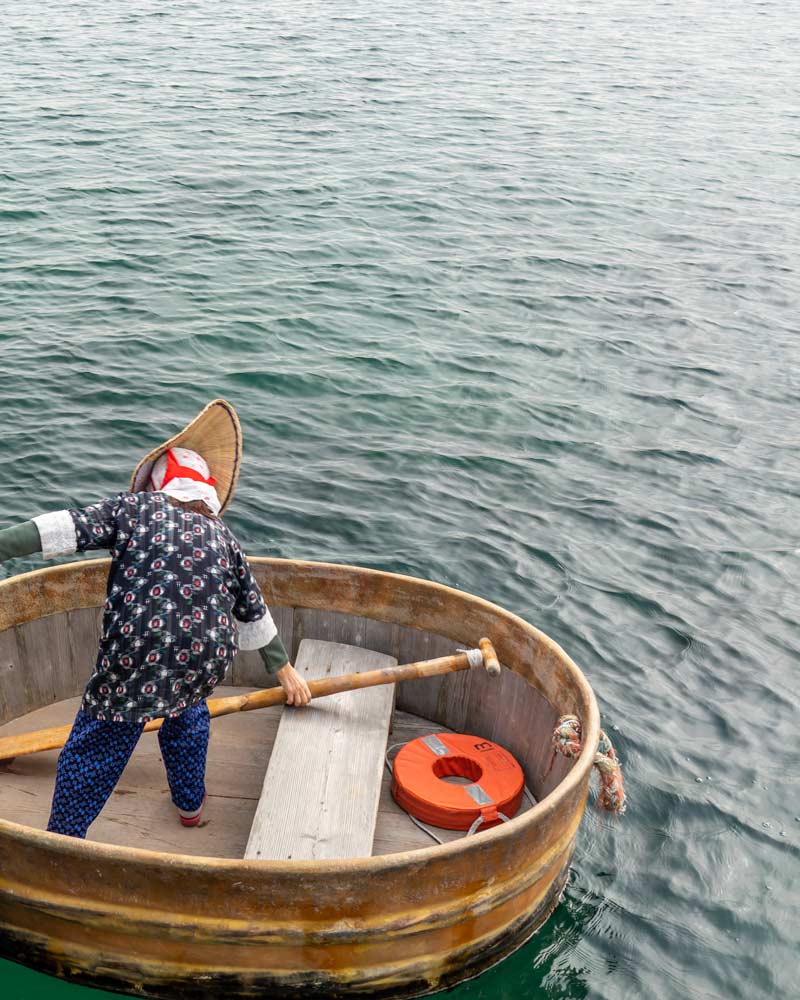
4. Japan’s gold history on Sado Island
There are a few different places you can take in the history of Gold on Sado Island, which made this island very wealthy and was shipped off to the mainland; The Gold Museum, the old Gold Mines, and the Gold Panning centre.
The Gold Museum provides an excellent overview of the history of the Island, especially about the gold industry and essential trading routes, of which Sado was a vital spot. The entrance is cheap, and I was impressed at the high-tech quality of the museum, and the fact all the videos were in English and Subtitled. Through a handful of different rooms, you are taken on a tour of the history, and animations are projected on 3D tables and walls, depicting water floods, gold flying, and mountains terrain.
A short drive from the museum are the mines themselves, the exterior stations now looking like some kind of Aztec Ruins, coated in green moss, fading back into the surrounding nature, but on closer inspection, concrete pillars and floors that had been abandoned, and exposed to the elements.
The two old mining tunnels are preserved, and an audio-guide tour will take you through these and around the back, where little trains and mountain views are shared with tool museums. The Sado Kinzan tunnels themselves show the conditions, traditions and reality of the mines, and being Japan, robots played the parter of the miners to depict that in further detail. There was something quite eerie about being way underground, and the occasional robotic arm or face moving towards you.
While explosives would have rushed the gold from the mountains into the waters, for tourists, a ready-made experience of inside sandy beds await for gold panning.
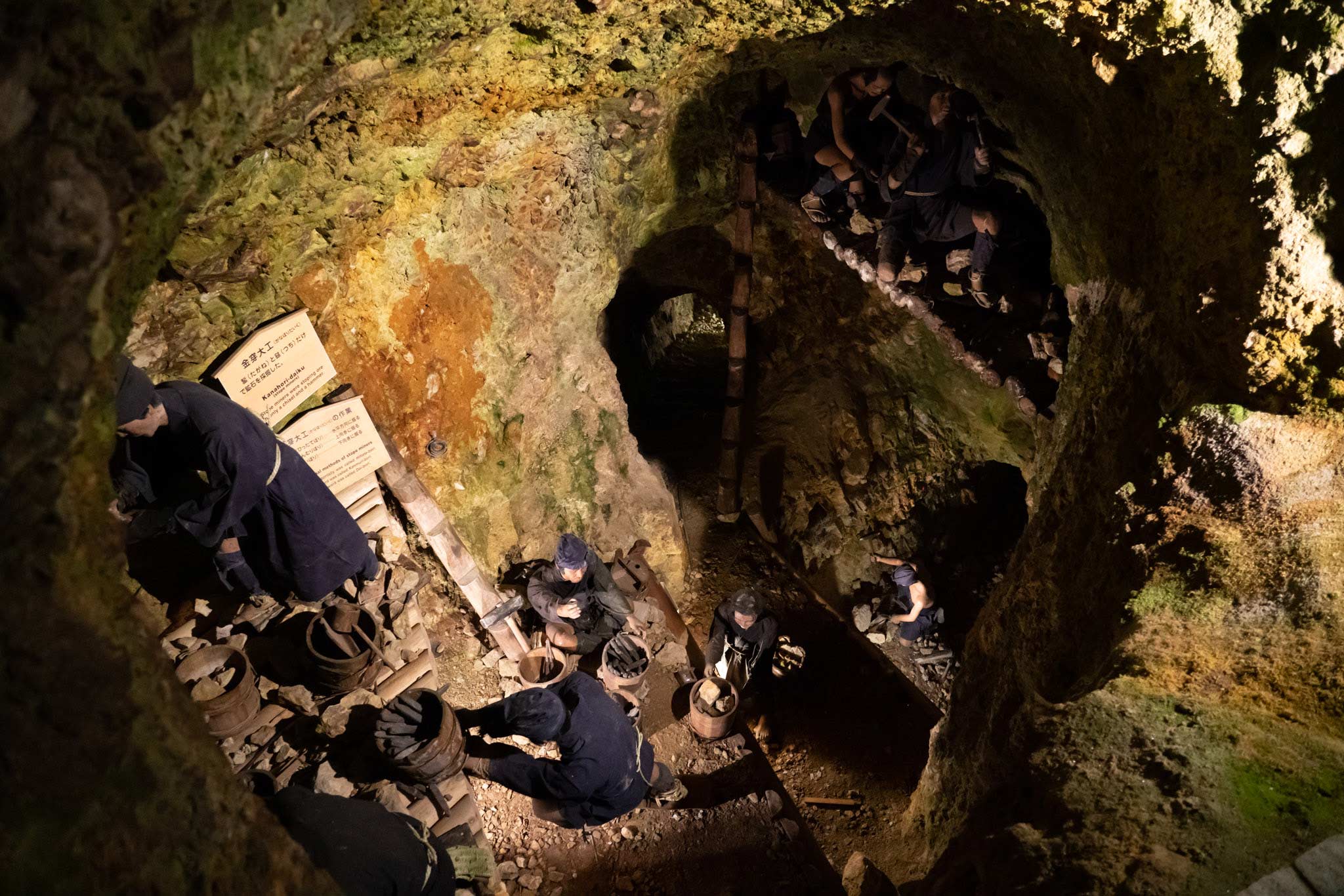
5. Temple hopping amongst nature
As with most of Japan, Temples can be found all across Sado Island, and due to the reduction in population, and nature reclaiming spaces, there is a real mix of temples to admire. From the pristine and preserved, to the abandoned and atmospheric.
Some of my favourites to visit on the island are Seisuiji Temple, where a rocky staircase lined with towering trees frame the entrance, before entering and being greeted by a beautiful and yet slowly decaying theatre, or the only Pagoda on the island, which is set amongst stunning gardens, at the Nichirenshumyosen Temple.
For something a bit more random, head to Chokokuji Temple, also known as the Rabbit Temple, not just because of the large rabbit statue outside, but because of all the bunnies bouncing around freely in the gardens!
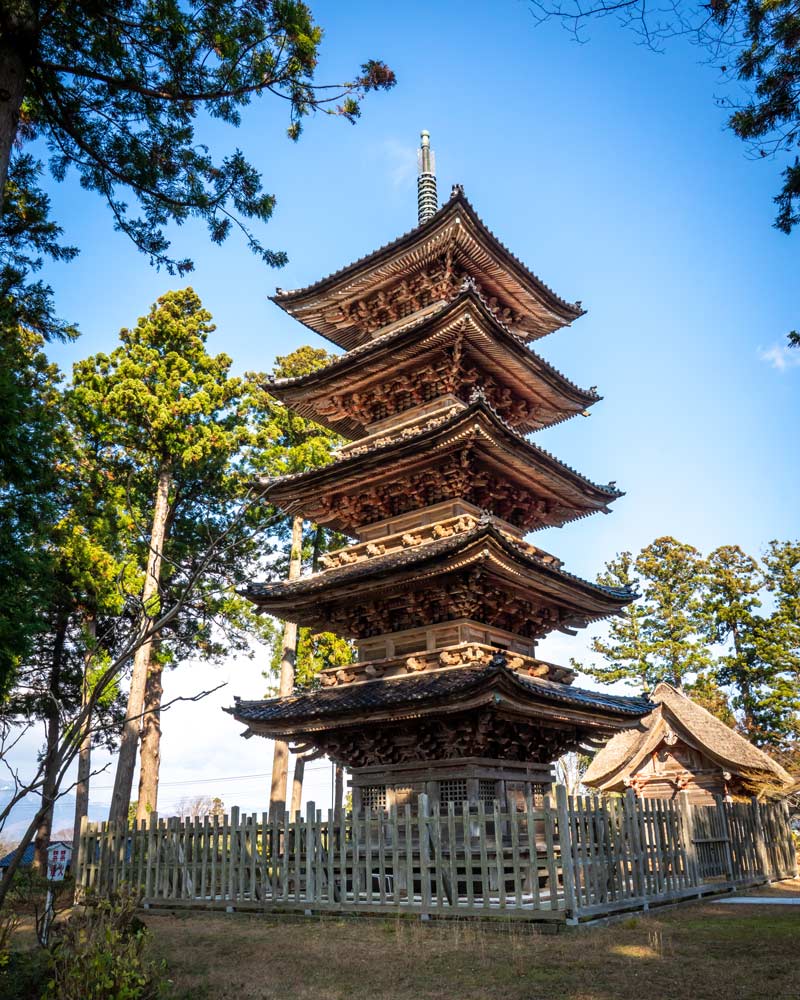
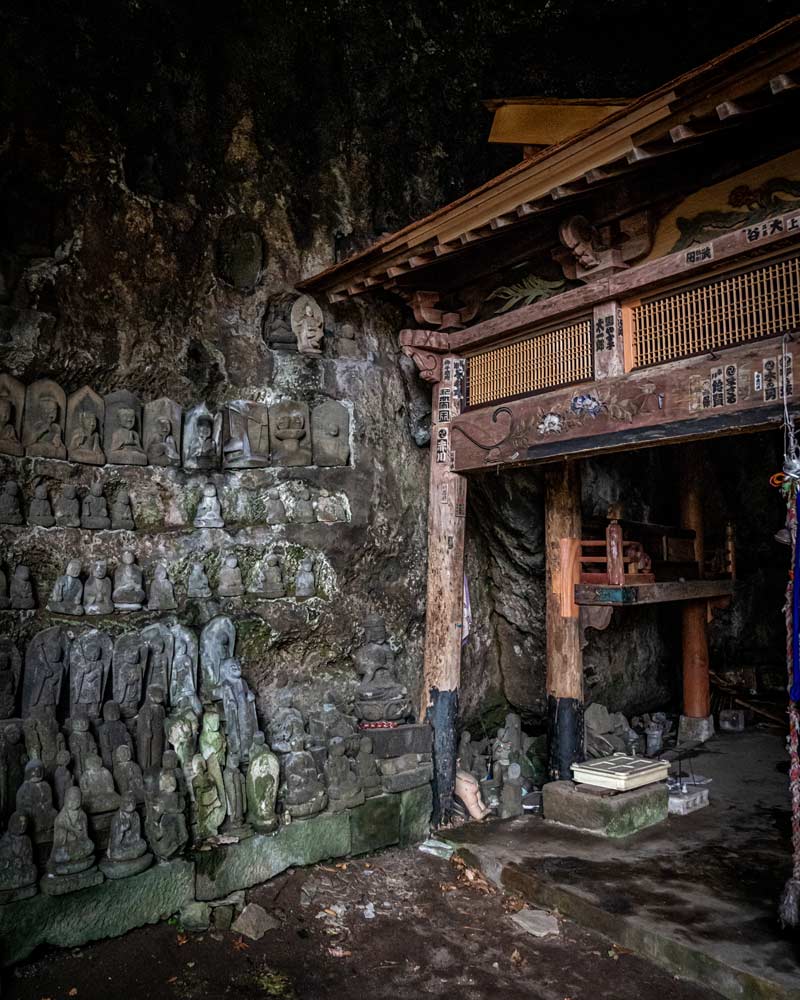
6. Ogi Folklore Museum
An abandoned school and temple building, the Ogi Folk Museum is packed to the rafters with pieces of the islands history. From fishing to school desks, lamps to religious objects, the many rooms hold a whole treasure trove of goodies – many of which were alien to me. Most of the information is not in English, but a short video about the towering ship in the museum gave some insight. You can also walk onto the replica boat, a copy of what would have taken gold off the Island. Each year for a special festival it is wheeled outside and the mast raised.
Apparently, in recent years though there have not been enough people to shift this beast outside, another reminder of the changes and challenges of Japan’s rural populations.
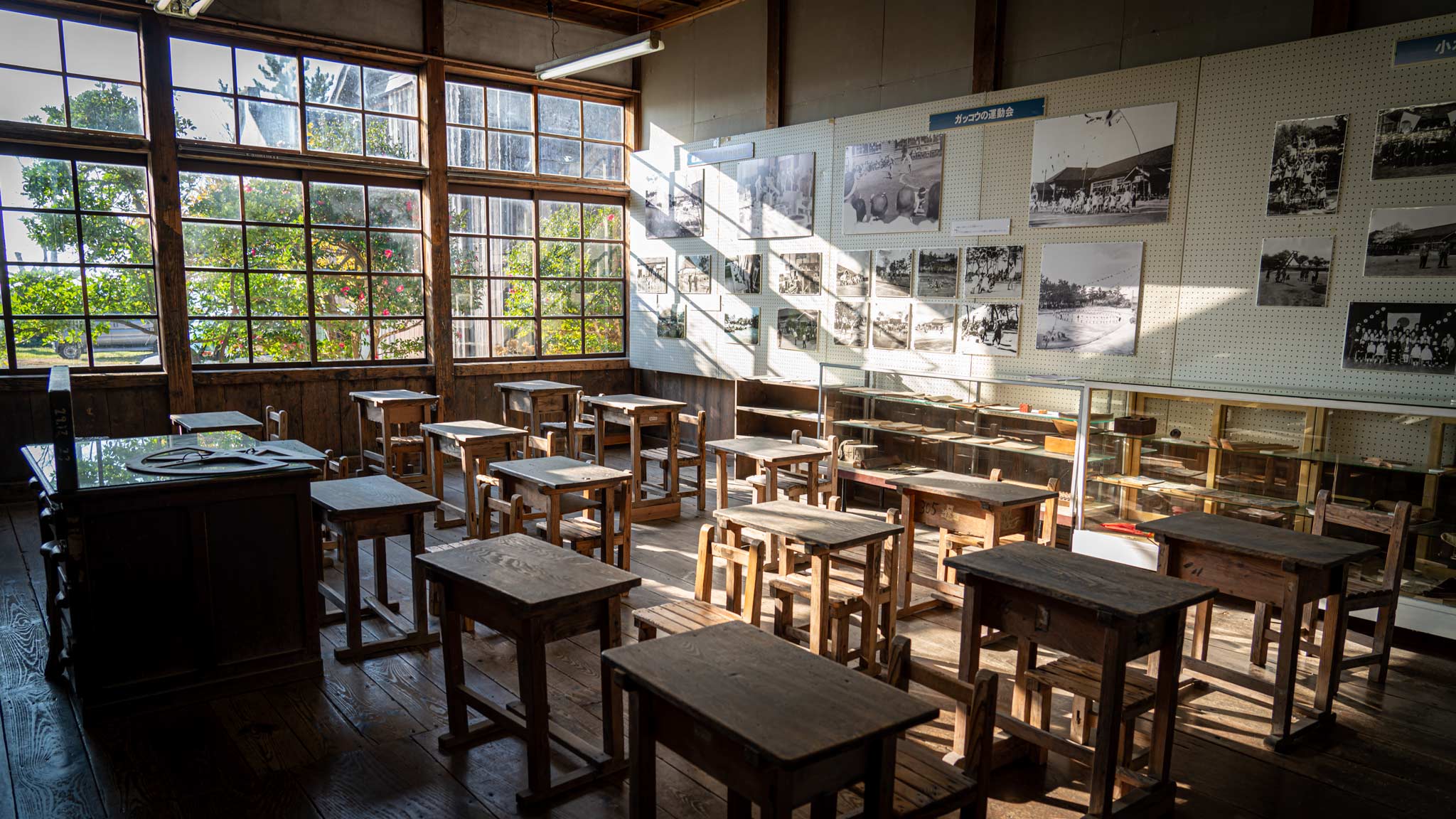
7. Shukunegi Village
For a more hands-on slice of Sado Island history though, Shukunegi Village, which you’d be forgiven for thinking is part of the museum, obliges. The tiny narrow streets of this community are framed by wooden buildings, dating back hundreds of years. Although peaceful and quiet, families do still live here, and many of the homes are occupied.
The village is a fascinating insight into how life was, and to an extent, still is on Sado, with colourful buildings of all shapes, and museums and rooms you can venture into and soak up the atmosphere of tradition. Little temples, springs, and the obligatory coffee vending machine remind you it’s very much still home to those that live here.
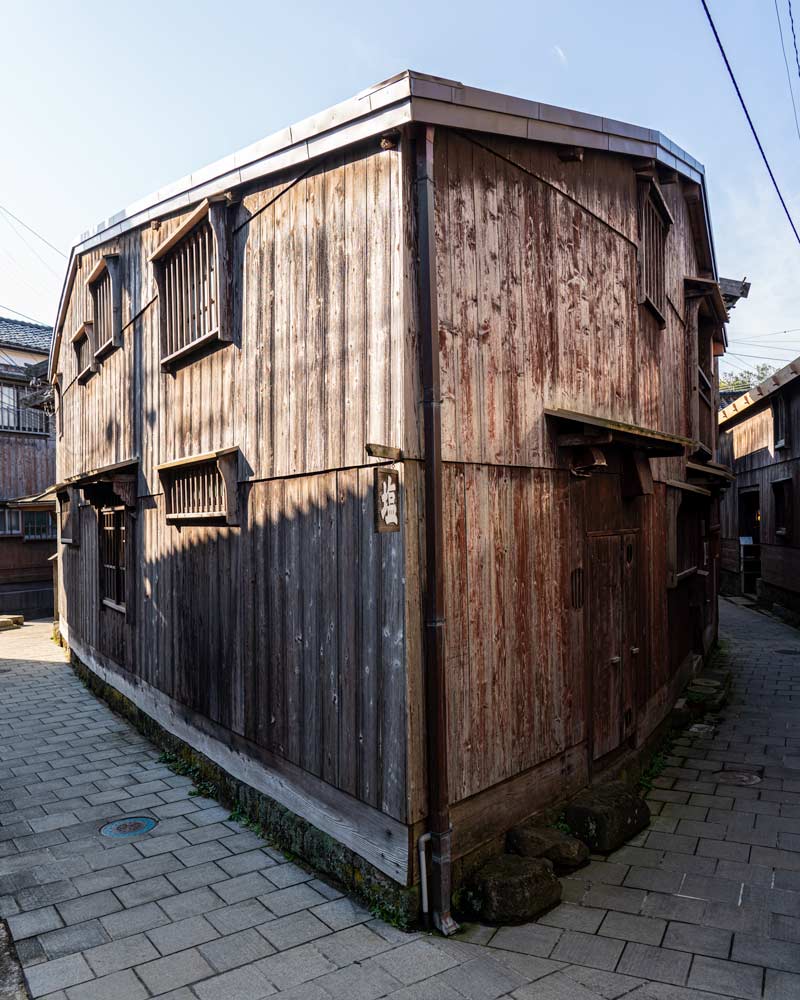
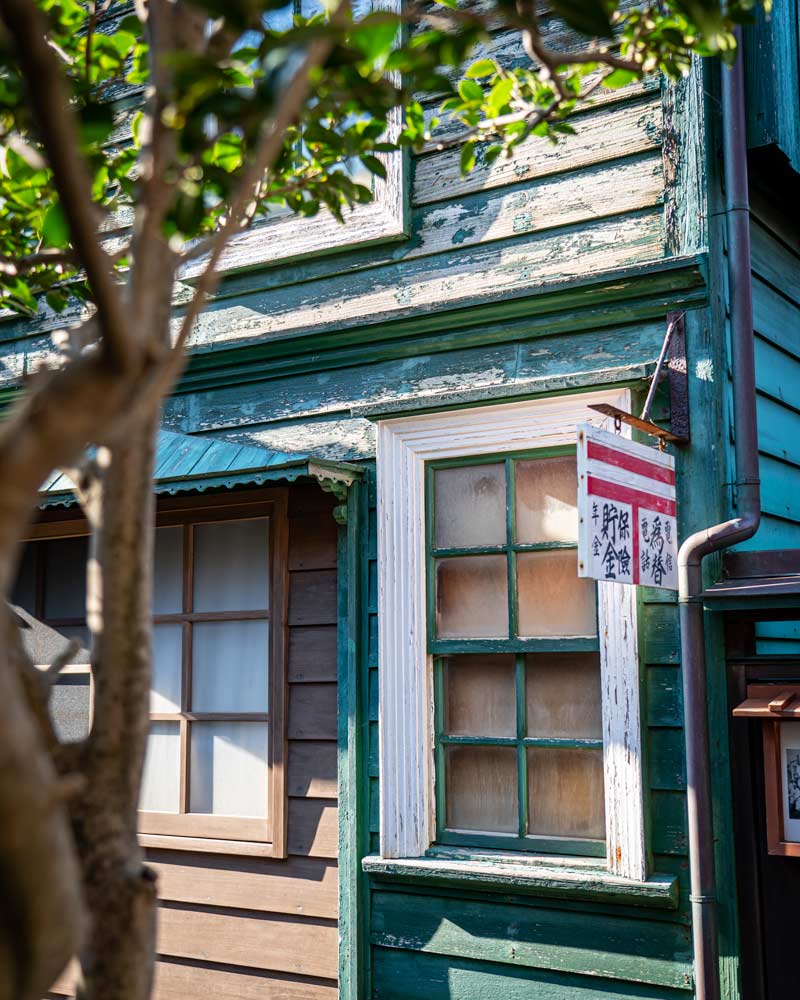
8. Noh Theatre
The art of Noh theatre is the most historical and traditional of art forms in Japan. A mix of drama and music, it has been entertaining people on Sado island for hundreds of years, with reports all the way back to the 14th-century.
Nowadays, you can still enjoy the Noh Theatre season in the warmer months, as these traditional performances take place on outside stages, with unique entrance and exit areas visible to the audience and brightly coloured painted backgrounds behind the performers.
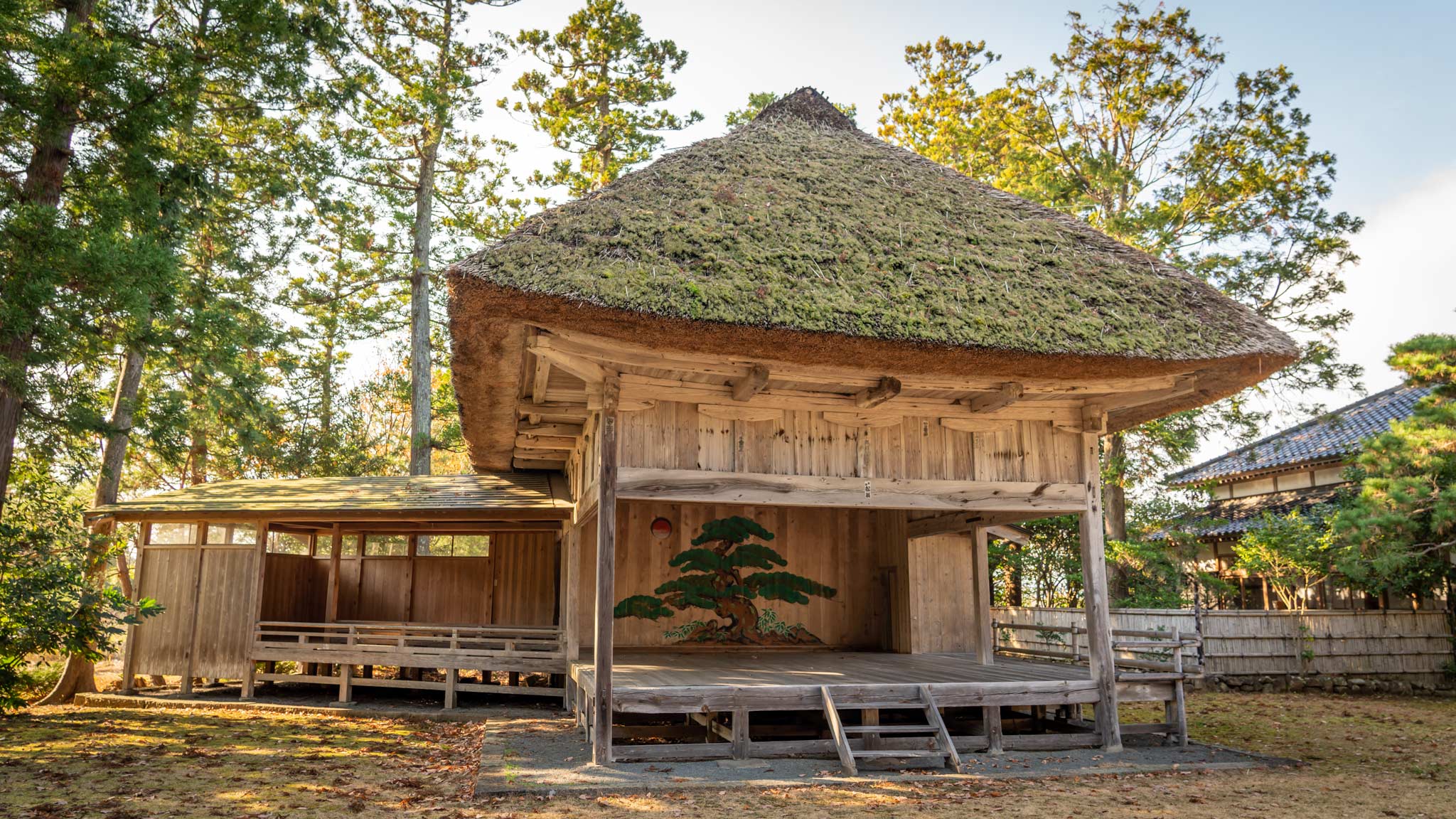
9. Free-roaming Ibis
The Toki (Crested Ibis) went extinct in Japan, but here on Sado Island, thanks to preservation efforts, this bird is back as an endangered species.
Nearby the port you can visit the Ibis park, where there is also a breeding programme for these beautiful birds, protected from the elements in their large homes. Even more special though is occasionally, you may spot one of these birds who have been released in the wild, keep an eye out on the empty rice terraces to try and spot one.
10. Award-Winning Sake
There are a few different Sake breweries on Sado Island which you can tour and do tastings at.
I visited the Obata Brewery, set in a converted school, and where you can sample the local Manotsuru Sake. You’ll be guided through the brewery, starting with a video of the history in the visitor centre, before sampling some of the award-winning Sake in the middle room. Finally, you’ll see the production warehouse in the back before leaving through the car-park. It’s a small, family-run operation, and provides an excellent insight into how Sake is made, and its history on Sado Island.
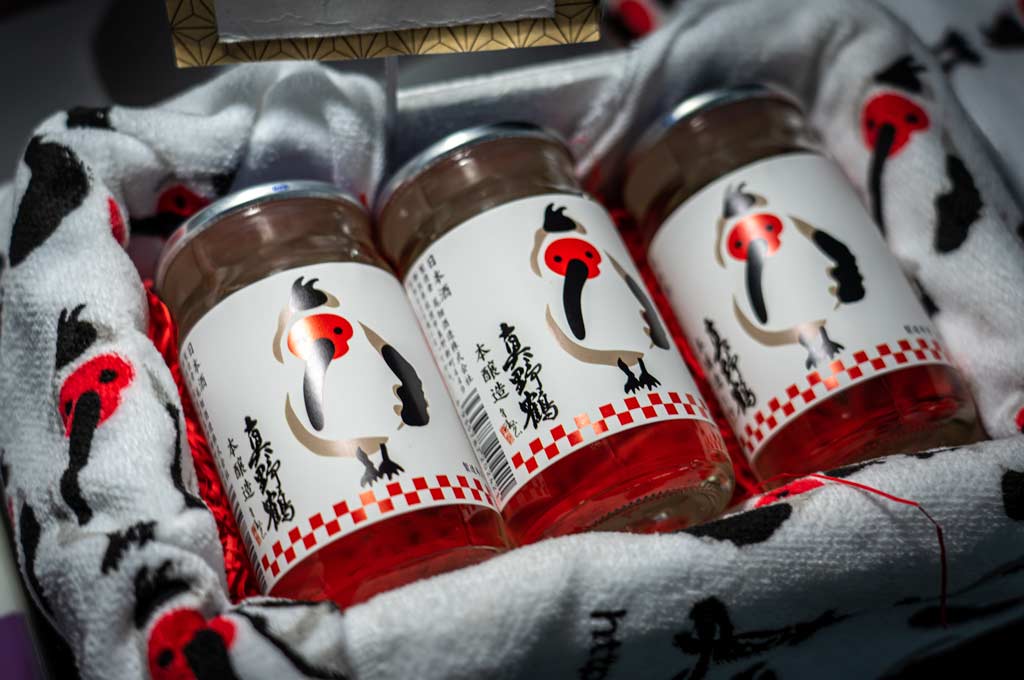
11. Onogame Rock and views
While I focused much of my visit to Sado Island on the south, if you head to the north you’ll find one of the most scenic viewpoints on the island, the Onogame Rocks, also known as the ‘two turtles’ locally. In the right months, lots of yellow wild flowers frame this 160-meter monolith, and the walks around the area are meant to be beautiful.
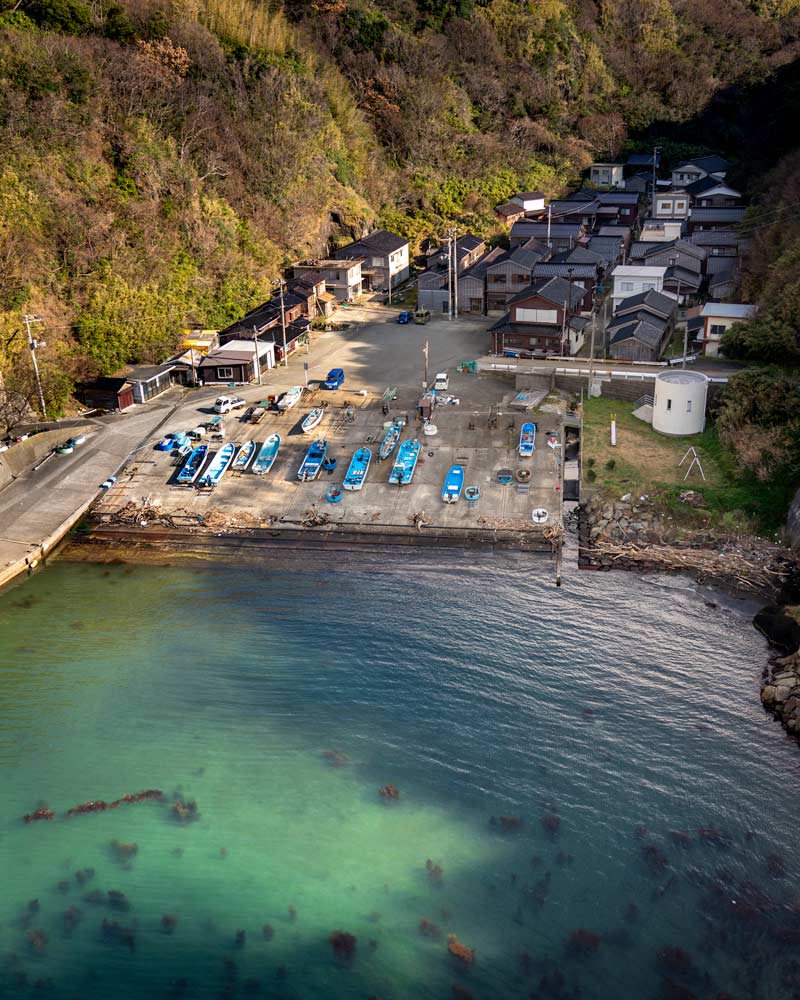
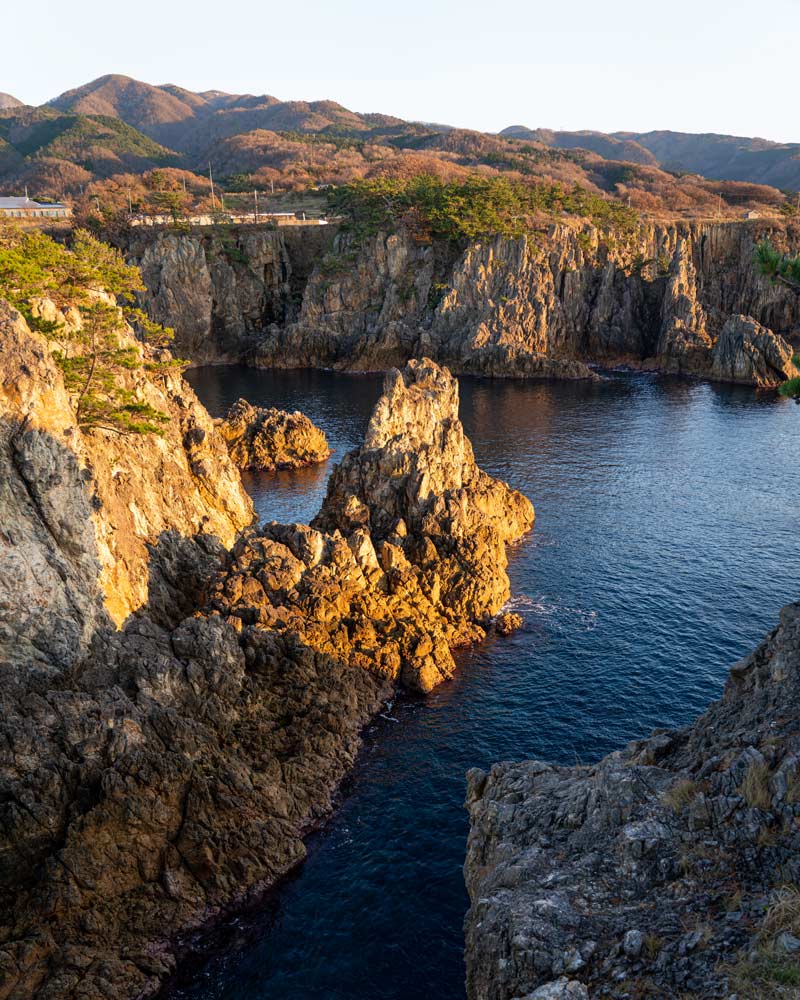
Getting to Sado Island: Sado Island is easily reached, although you’ll need a bit of patience. No airport is required, as you can take the Joetsu Shinkansen to Niigata, the journey time is around 2.5 hours. From the station, a twenty-minute walk, or short bust journey, will take you to the ferry port where you have two options, with different prices, both run by Kisen. The jetfoil which takes around one hour, or the passenger and car ferry, which takes around three hours.
I did the jetfoil over, however, due to bad weather on my return these were cancelled, and only the slower ferry was running – something to be aware of. Pricing is in different tiers on the ferry, depending on what class and lounge you want to sit in. You can find more details/tickets here.
Getting around Sado Island: For a small island, Sado is reasonably well equipped for tourism. Details on the various bus routes can be found here – though note they don’t offer that much flexibility, nor can take you to every place mentioned in this article. The hiring of a private driver for the day may be helpful to reach places that are further out from where you are staying, and not on the bus network. I used Okesa Taxi – and although the website is not in English, run it through Google Translate. My driver, Nagata, was super helpful and friendly and was very kind to offer to accompany me into certain attractions where he knew I would require translation help.
Where to stay on Sado Island: I stayed at the Hana no Ki Rykonan, which although seems far away in the southern tip of the island, is actually well located for a lot of places you’ll want to visit, such as Shukunegi Village.
A family-run Ryokan, in a beautiful home dating back some 150-years, they also own another hotel with onsen in the next village, and you can get a lift to use the facilities. While it was winter during my visit, the large room windows looking out over rice terraces and the ocean, coupled with the tranquil gardens and traditional wooden futon bedrooms made for a relaxing and peaceful place to stay. Official Website | Tourist Website (in English)
Want to know how to spend two days on Sado Island? Check out my article or my vlog about exploring Sado Island!




Japan is an amzaming country. I have always wanted to visit Japan and learn more anout Geologly and enjoy some cultural tours of Japan. Great piece though.
Thank you.
Thank you, hope you can visit sometime :)
Thank you Dan for sharing this with us, Japan has always been my dream travel destination, didn’t know of Sado Island but on my travel busket. Thank you again.
Nice article about sadoi islands.Japan is a beautiful country where tradition and technology go hand in hand.
Due to lockdown in India, I cannot travel to Japan this year but now Netflix, Travel Blog story, and Youtube is the only way to travel virtually. Btw, Thanks Daniel for this wonderful post…
Over the last four weeks, I’ve come to realize that Japan is not one of those places you can understand virtually. It is a country you need to witness, breathe, experience and feel for yourself. To convince you that Japan is worth visiting, I can only give you a glimpse of this layered, complex, intriguing part of the world for this is a country where.
Hey man! thank you for sharing with me about Japan! Keep up the good work!
I would love to go to Japan. It looks amazing!
Great article!
Nice article 👌😁
Thank you for sharing your experience! Would love to go to Japan when it’s possible again, especially Sado Island :).
Thanks for sharing your experience about JAPAN.
I would like know being a indian if i visit japan how do i talk with Japanese? Do Japanese know English ? And i would like know about local bus and taxi service in japan how can we take taxi or bus if we want to travel in local janan from place to another place?
Many people do speak English, and everyone is very helpful too. In the big cities, machines and timetables are also written in English. I’d reccomened having a local simcard and google translate on your phone though, which people can talk into and help translate.
Great Dan , Sado Island looks Amazing